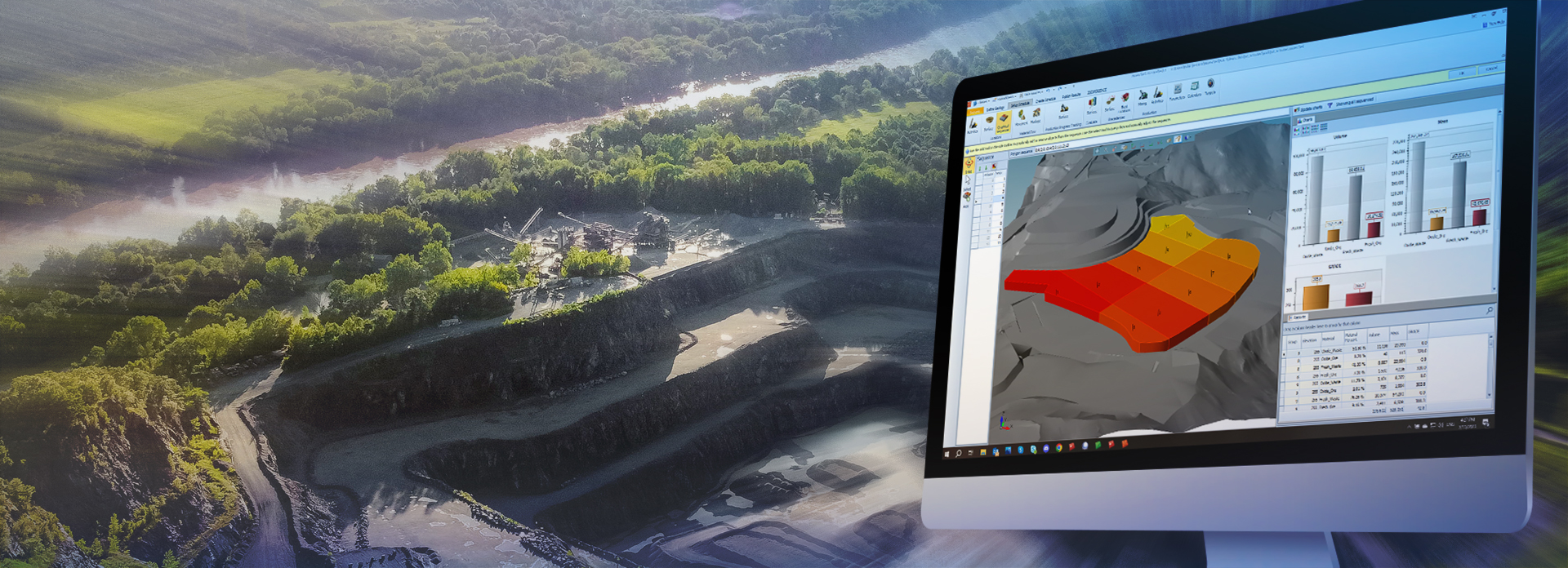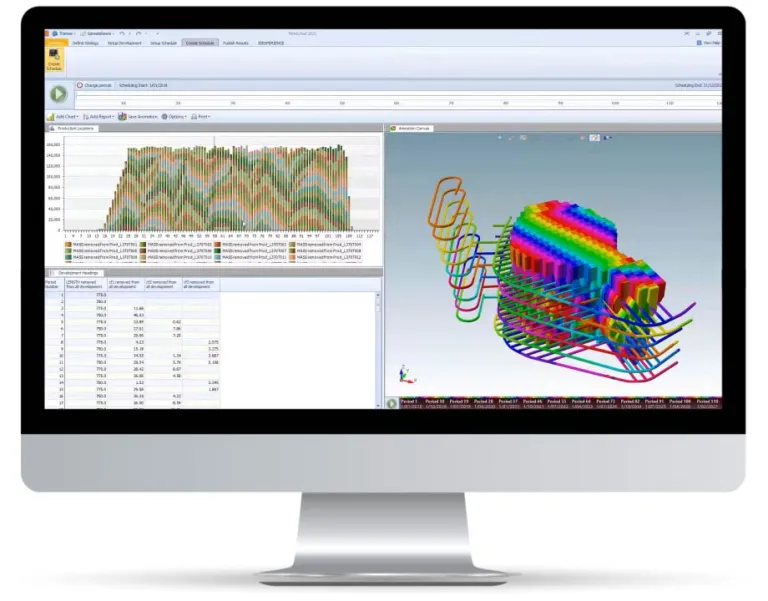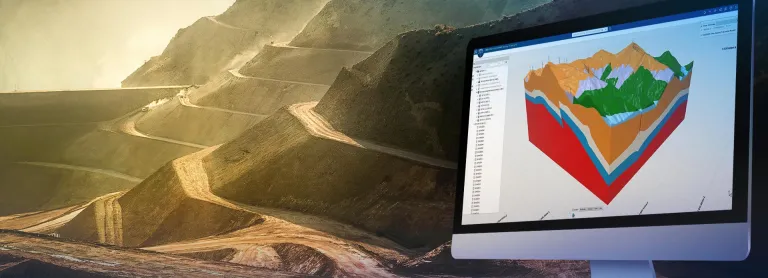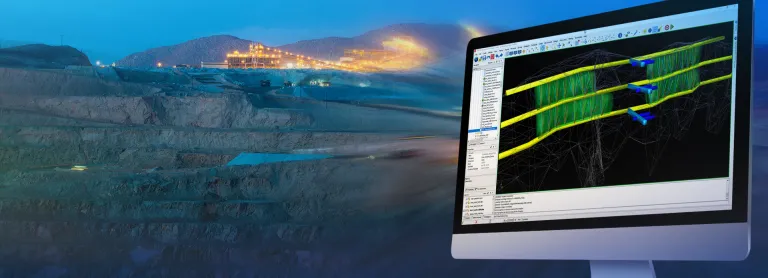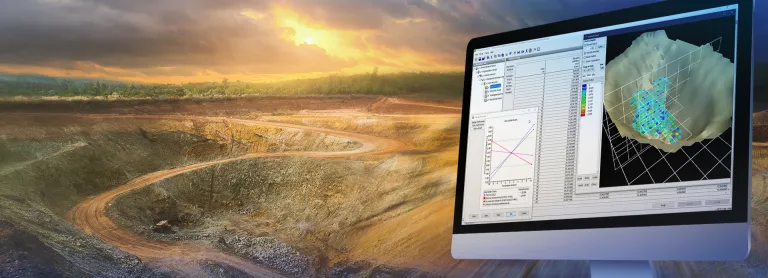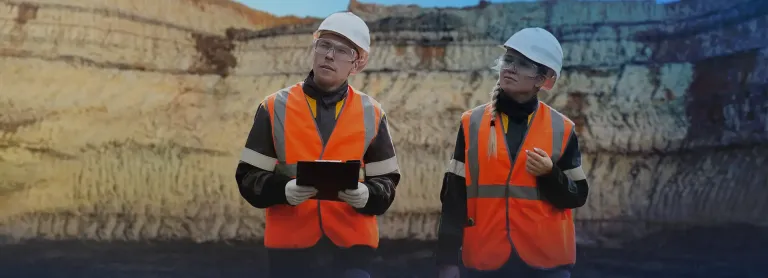GEOVIA MineSched
Advanced Tactical Mine Planning & Scheduling
Unlock the Power of Your Mine Schedules
GEOVIA MineSched makes developing a tactical mine plan — a plan that turns the decisions defined in a long-term strategic mine plan into a schedule to guide day-to-day operations — breathtakingly easy by providing intuitive, rapid setup, and guided workflows that enable the creation of target-based, long- and short-term schedules from pre-created block and polygon models.
For open pit mines, MineSched supports efficient, automated scheduling of pit push-backs and mining benches. For underground mines, it allows engineers to model material flow through re-mucks, ore passes, and material transport levels. For all mines, it expedites comparisons between thousands of potential scheduling scenarios to help determine the one schedule with the highest operational productivity and profitability.
GEOVIA Tactical Mine Planner
Produce practical and executable tactical mine plans from a long term strategic plan, for the optimal development and exploitation of the ore body.
- For open pit mines, accepts and schedules any number of pits
- For underground mines, supports scheduling of development advance as well as stope production
- Heuristic algorithms for target-based scheduling allow superior results to be obtained when targeting specific material ratios and quality objectives
- Manages stockpiles
- Calculates haulage requirements
- Supports all minerals and mining methods
- Development & production planning integration for sub-level caving
Start Your Journey
The world of mining is changing. Discover how to stay a step ahead with GEOVIA
GEOVIA Mine Scheduling FAQ
Also Discover
Learn What GEOVIA Can Do for You
Speak with a GEOVIA expert to learn how our solutions enable seamless collaboration and sustainable innovation at organizations of every size.
Get Started
Courses and classes are available for students, academia, professionals and companies. Find the right GEOVIA training for you.
Get Help
Find information on software & hardware certification, software downloads, user documentation, support contact and services offering
